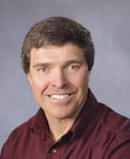 With most ski slopes opening in less than two months, now is the time
to initiate a sensible ski conditioning program. If you wait until the
snow flies you won't be able to properly pre-condition your
musculoskeletal system for the rigors of downhill skiing. So for safe,
successful, and sustained ski runs this winter, start shaping-up now.
With most ski slopes opening in less than two months, now is the time
to initiate a sensible ski conditioning program. If you wait until the
snow flies you won't be able to properly pre-condition your
musculoskeletal system for the rigors of downhill skiing. So for safe,
successful, and sustained ski runs this winter, start shaping-up now.
Cardiovascular Fitness
Although downhill skiing is not considered an aerobic activity, I
strongly recommend some regular endurance exercise to enhance your
cardiovascular fitness and establish a solid base for active days on
the slopes. Endurance exercise is performed at low to moderate effort
levels for about 20 to 30 minutes at a time. Brisk walking is an
acceptable aerobic activity, but I advise progressing to jogging,
cycling, stepping, or other forms of endurance exercise that enable
you to attain and maintain a higher heart rate response. Generally
speaking, your training heart rate should be about 70 percent of your
maximum heart rate. The table below presents target training heart
rates for men and women between 20 and 80 years of age.
|
| Age |
20 yrs. |
30 yrs. |
40 yrs. |
50 yrs. |
60 yrs. |
70 yrs. |
80 yrs. |
| Maximum Heart Rate |
200 bpm |
190 bpm |
180 bpm |
170 bpm |
160 bpm |
150 bpm |
140 bpm |
| Target Training Heart Rate |
140 bpm |
133 bpm |
126 bpm |
119 bpm |
112 bpm |
105 bpm |
98 bpm |
|
Because downhill skiing is not a continuous activity, you may prefer
an interval training approach to endurance exercise. That is, instead
of pedaling the exercise cycle at level 4 for 24 minutes, you could
alternate between level 3 for 3 minutes and level 5 for 3 minutes.
Interval training basically alternates periods of higher effort
exercise with periods of lower effort exercise. This type of training
is very effective for enhancing cardiovascular fitness, and is also
more similar to downhill skiing than continuous aerobic activity. You
should do at least three endurance exercise sessions a week for best
results.
Muscular Fitness
Downhill skiing requires intense muscular effort, especially in the quadriceps, hamstring, and gluteal muscles of the legs, and in the oblique muscles of the midsection. While good muscle strength is essential for a successful run, good muscle endurance is necessary for successive trips down the slopes. After all, when you pay for a day ticket, you don't want to feel fatigued after the first hour of skiing.
Because they are the most important muscles for improved skiing performance, I recommend starting your strength training workout with the large muscles of the legs. If you have access to resistance machines, the preferred leg exercises and training protocol are as follows: